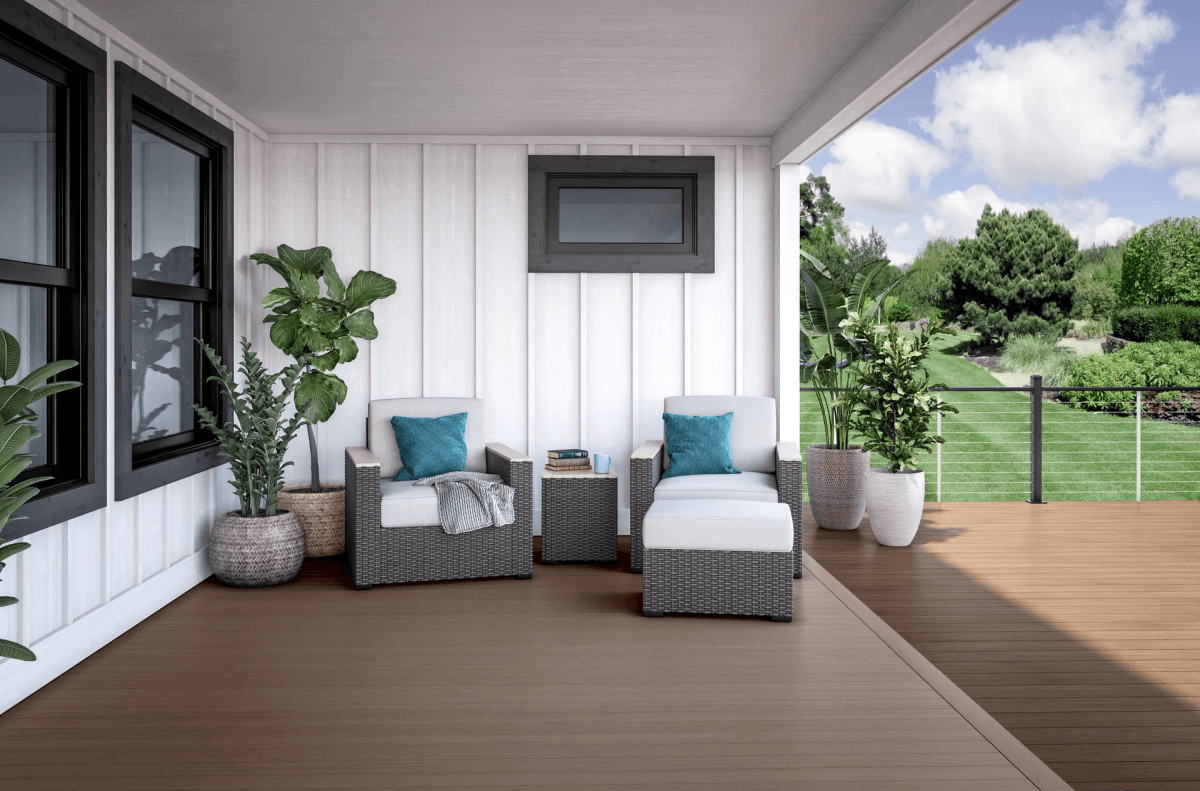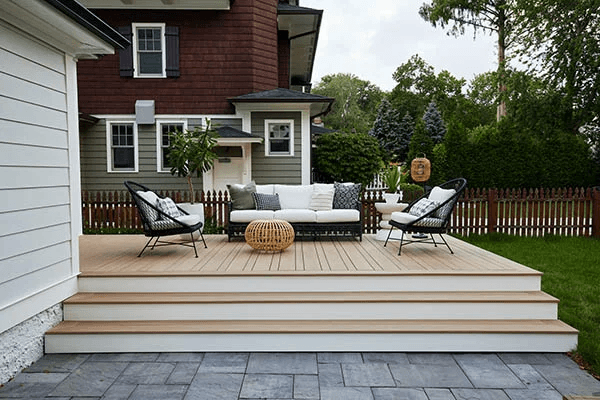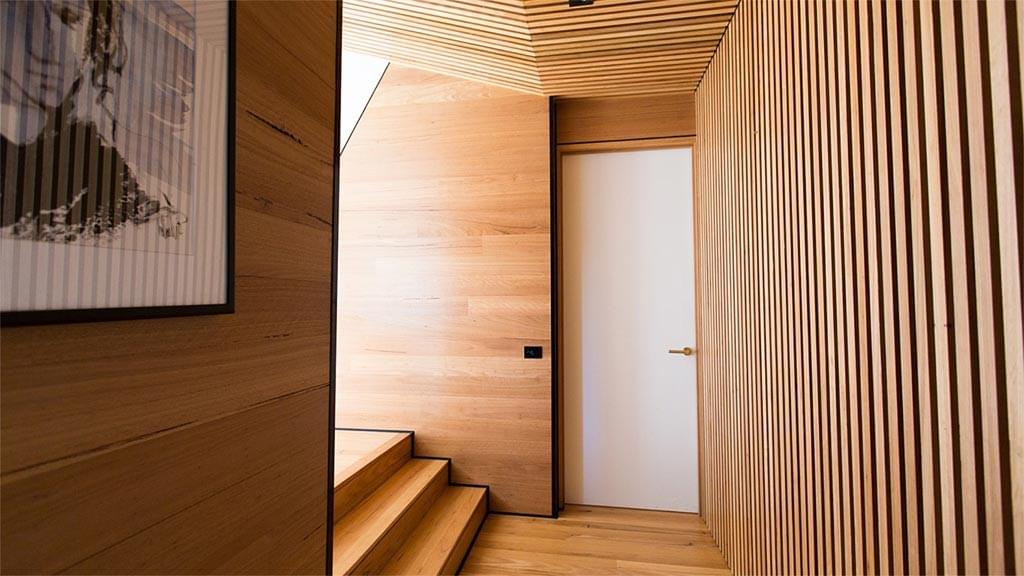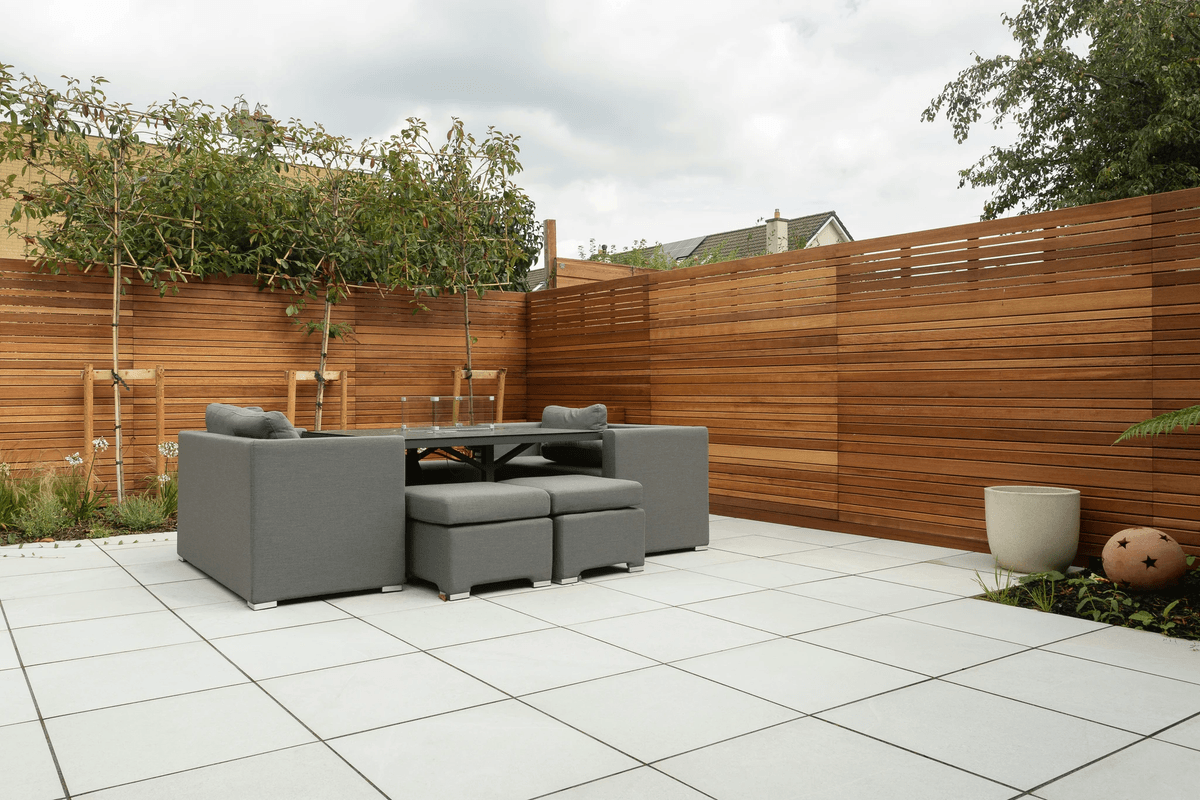Introduction
This innovative solution not only revitalizes dull concrete surfaces but also offers the durability and aesthetic appeal that traditional wood decks often lack. With the right knowledge, building a deck with composite decking can be a straightforward and rewarding project.
Understanding Composite Decking Over Concrete
Composite decking is engineered from a blend of recycled materials, making it an eco-friendly alternative to traditional wood. When installed directly on concrete, this type of decking can provide a sleek and modern look while minimizing maintenance needs. Understanding how composite decking over concrete works—especially when considering options like composite decking over concrete without sleepers—can help you make informed decisions for your outdoor renovation.
Benefits of Choosing Composite Materials
One of the key benefits of choosing composite materials is their resistance to rot, splintering, and fading compared to natural wood options like PVC decking. This durability means less time spent on upkeep and more time enjoying your beautiful new deck! Additionally, building a deck over concrete with composite materials allows for better moisture control, ensuring that your investment lasts longer in various weather conditions.
Common Misconceptions About Decking
Despite its growing popularity, there are still some misconceptions about using composite materials for outdoor projects. Many believe that all types of decking require extensive support systems or that they can't be installed directly onto existing surfaces like concrete; however, that's not always the case! By exploring options such as building a deck with composite decking without sleep systems, you can discover efficient methods that save time and resources while achieving stunning results.
Can You Install Composite Decking on Concrete?

Installing composite decking over concrete is a practical solution for homeowners looking to enhance their outdoor spaces. It offers a durable and attractive alternative to traditional wood decking, providing the benefits of low maintenance and longevity. But how exactly can you achieve this transformation? Let's dive into the various installation techniques.
Overview of Installation Techniques
One popular approach is using sleepers—small pieces of wood or composite material that create a frame for the decking boards. However, many homeowners are discovering the benefits of composite decking over concrete without sleepers, which simplifies the process and reduces costs while still delivering an impressive end result.
Whether you're considering PVC decking or other composite materials, understanding your installation options is key. Proper planning ensures that your new deck will be both functional and aesthetically pleasing. With the right techniques in place, you can enjoy all the perks of composite materials without the hassle of complicated setups.
Composite Decking Over Concrete Without Sleepers
Installing composite decking directly over concrete eliminates the need for additional framing using sleepers, making it an appealing choice for many DIY enthusiasts. This method allows for a more straightforward installation process while maintaining proper support for your deck boards. By placing your deck composite decking directly on a clean and prepared concrete surface, you can create an elegant outdoor space with minimal fuss.
One crucial aspect when opting for this method is ensuring that your concrete surface is adequately prepared before laying down your boards. Cleaning any debris and repairing cracks will help provide a solid foundation for your new deck. Additionally, proper moisture control must be established to prevent water damage and ensure long-lasting performance.
Advantages of Going Sleepless
The decision to install composite decking over concrete without sleepers comes with numerous advantages that make it worth considering for any homeowner or builder alike. First off, skipping sleepers means reduced material costs—no need to purchase additional lumber or materials! This also translates into faster installation times since you won't have to worry about measuring and cutting sleeper boards.
Another significant benefit is enhanced stability; by placing your deck directly on the concrete surface, you're minimizing movement caused by shifting ground or weather changes. This stability helps maintain the integrity of PVC decking or other composite materials you choose while reducing potential wear and tear from shifting components over time.
At Composite Decking Inc., we believe in transforming outdoor spaces with high-quality solutions like these that stand up against nature's elements without compromising aesthetics or durability! So if you're ready to take on building a deck with composite decking directly over concrete surfaces, rest assured you're making an excellent choice!
Preparing Your Concrete Surface

Preparing your concrete surface is a crucial step in the process of building a deck over concrete. A well-prepared surface ensures that your composite decking will perform optimally and last for years to come. Neglecting this step can lead to issues such as warping, uneven surfaces, and moisture problems down the line.
Importance of Proper Surface Preparation
An uneven or damaged concrete slab can create significant challenges during installation, leading to an unsightly and unstable deck. By taking the time to prepare your concrete properly, you ensure a solid foundation for building a composite deck that not only looks great but also stands the test of time.
Cleaning and Repairing Concrete
Before laying down your deck composite decking, it's essential to clean and repair any imperfections in the existing concrete surface. Start by sweeping away debris, dirt, and any loose materials that may interfere with adhesion or stability. For cracks or holes, use a high-quality epoxy filler to repair them; this will create a smooth surface ideal for decking over concrete.
Ensuring Drainage and Moisture Control
Ensuring proper drainage is vital when preparing your concrete surface for composite decking installation. Water pooling beneath your new deck can lead to mold growth or damage over time, undermining the benefits of using durable materials like PVC decking or other composites. Consider sloping the concrete slightly away from structures and incorporating drainage solutions such as weep holes or gutters to keep moisture at bay while maintaining an attractive outdoor space.
Choosing the Right Composite Decking

Selecting the right composite decking is crucial for ensuring a successful outdoor project. With a variety of options available, homeowners often find themselves wondering which material will best suit their needs, especially when considering building a deck over concrete. Understanding the differences among these materials can help you make an informed decision that combines aesthetics with functionality.
Deck Composite Decking Options
Many brands offer products designed specifically for use over concrete, including those suitable for composite decking over concrete without sleepers. These options not only enhance your outdoor space but also provide the durability needed to withstand various weather conditions.
Composite decking typically comes in two main categories: capped and uncapped boards. Capped boards feature a protective outer layer that resists stains and scratches, making them ideal for high-traffic areas or families with pets. Uncapped boards are generally more affordable but may require additional maintenance; however, both types can be effectively used in building a deck with composite decking.
Comparing PVC Decking and Other Materials
PVC decking is another popular choice among homeowners looking to build a deck over concrete due to its excellent moisture resistance and low maintenance requirements. Unlike traditional wood or even some composite options, PVC does not absorb water, which makes it less prone to warping or mold growth—issues often encountered with other materials when dealing with moisture challenges during installation.
When comparing PVC decking to other materials like wood or traditional composites, consider factors such as lifespan, aesthetics, and environmental impact. While wood may offer natural beauty, it requires regular upkeep; on the other hand, both PVC and composite materials provide long-lasting results without the hassle of constant maintenance. Ultimately, choosing between these options depends on your specific needs for durability and appearance.
Durable Choices for Long-Lasting Results
Durability is paramount when selecting your composite decking material—after all, you want your investment to stand the test of time! Look for products that come with extensive warranties; many manufacturers offer 25 years or more on their composite decking lines due to their confidence in longevity under normal use conditions.
In addition to warranty considerations, evaluate how different materials perform against common issues like fading from UV exposure or warping from temperature fluctuations—especially important if you're building a deck over concrete where heat retention can be significant. At Composite Decking Inc., we pride ourselves on providing high-quality solutions designed specifically for longevity while enhancing your outdoor aesthetics.
To sum up this section: whether you're leaning toward traditional composites or exploring innovative PVC alternatives in building a composite deck over concrete without sleepers, understanding your options will lead you toward making an informed choice that enhances both beauty and functionality in your outdoor living space.
Building a Deck Over Concrete

Building a deck over concrete can be a rewarding project that enhances your outdoor space. Whether you're considering composite decking over concrete without sleepers or traditional methods, understanding the steps involved is crucial for success. This section will guide you through the essential preparations and installation tips, ensuring your new deck is both beautiful and durable.
Steps to Take Before Installation
Before diving into building a composite deck, it’s essential to assess your existing concrete surface. Start by checking for cracks or uneven areas that may require repair; a smooth foundation is key for longevity. Next, clean the concrete thoroughly to remove any debris, dirt, or grease that could interfere with the installation of your decking.
Once you've prepared the surface, consider moisture control strategies to prevent future issues. Installing proper drainage systems will help manage water runoff and ensure your composite decking remains in top shape over time. Lastly, gather all necessary tools and materials before starting; this will streamline your process and keep frustrations at bay.
Installation Tips for Success
When it comes to installing composite decking over concrete, there are several techniques to consider—especially if you’re opting for composite decking over concrete without sleepers. One popular method involves using hidden fasteners that create a clean look while providing strong support. Be sure to follow manufacturer guidelines closely for spacing and fastening; this ensures optimal performance of your deck composite decking.
If you choose to go with traditional sleepers instead of building a deck with composite decking directly on the concrete, make sure they are properly anchored and spaced according to specifications. This method allows for better airflow beneath the boards but adds extra steps in terms of labor and materials. Regardless of which approach you take, always double-check measurements before cutting any materials—it's much easier than dealing with mistakes later!
How to Maintain Your New Deck
Congratulations! You’ve successfully built a stunning outdoor space with durable PVC decking or other composite materials that resist fading and wear over time. To maintain its beauty and functionality, regular cleaning should become part of your routine; simply sweep away debris and wash with soap and water as needed.
Keep an eye out for any signs of damage or wear—addressing these issues early can prolong the life of your composite deck significantly. Additionally, inspect drainage systems periodically to ensure they remain clear from obstructions so moisture doesn’t accumulate under your deck during heavy rains.
At Composite Decking Inc., we understand how important it is for homeowners like you to enjoy their outdoor spaces worry-free! With our high-quality products designed specifically for longevity in mind, transforming your backyard into an oasis has never been easier.
Common Problems and Solutions

When embarking on the journey of building a deck over concrete, it’s essential to anticipate potential issues that may arise during the installation process. Many homeowners may wonder about the feasibility of composite decking over concrete without sleepers, as this approach can simplify the installation but also presents unique challenges. By understanding these common problems and their solutions, you can ensure a smoother experience when installing your deck composite decking.
Addressing Potential Installation Issues
One of the first hurdles in building a deck with composite decking is ensuring proper alignment and securing of the boards. If you're opting for composite decking over concrete without sleepers, you'll need to pay close attention to leveling; an uneven surface can lead to warping or gaps between boards. Additionally, it's crucial to follow manufacturer guidelines for spacing and fastening to avoid issues down the line.
Another common issue is ensuring that your chosen material is compatible with your existing concrete slab. While PVC decking offers excellent resistance against moisture, if not installed correctly, it might still suffer from buckling or shifting due to temperature changes or improper drainage systems beneath. To mitigate these risks, consider investing in quality materials from trusted suppliers like Composite Decking Inc., which provide durable options designed specifically for such installations.
Lastly, be mindful of local building codes and regulations when undertaking this project. Depending on where you live, there may be specific requirements regarding structural support or water drainage that must be adhered to when building a deck over concrete. Always check with local authorities before starting your project to avoid any surprises later on.
Dealing with Moisture and Temperature Changes
Moisture control is vital when installing composite decking over concrete since excessive water accumulation can lead to mold growth or damage both your deck and underlying structure. To combat this problem effectively, ensure that you have proper drainage systems in place before laying down your materials; this could include sloping surfaces or using perforated membranes beneath your deck composite decking for better moisture management.
Temperature fluctuations can also impact how well your chosen material performs outdoors—especially if you're using PVC decking known for its thermal expansion properties. During installation, allow sufficient space between boards so they have room to expand and contract without causing damage or warping as temperatures change throughout the seasons.
To further protect against moisture-related issues, consider applying sealants around edges where water might accumulate—this simple step can significantly extend the lifespan of your new outdoor space while maintaining its aesthetic appeal as well.
Maintenance Tips for Longevity
Once you've successfully built a deck with composite decking over concrete, regular maintenance will help keep it looking great for years to come! Start by routinely cleaning debris off surfaces using a broom or leaf blower; this prevents dirt buildup that could lead not only to unsightly stains but also potential mold growth if left unchecked.
For deeper cleaning sessions every few months—or whenever necessary—use mild soap mixed with warm water along with a soft-bristle brush; avoid harsh chemicals as they may damage finishes on your PVC decking! Afterward, rinse thoroughly with clean water so no residue remains behind which could dull its shine over time.
Finally, inspect fasteners periodically for tightness since loose screws can lead not just to wobbly boards but also safety hazards down the line! By staying proactive about maintenance tasks like these—and investing in high-quality materials from Composite Decking Inc—you’ll enjoy beautiful outdoor spaces built upon solid foundations!
Conclusion
In wrapping up our exploration of composite decking, it’s clear that this modern solution offers a plethora of benefits for homeowners looking to enhance their outdoor spaces. From ease of maintenance to aesthetic appeal, composite decking stands out as a top choice. Whether you’re considering building a deck over concrete or upgrading your existing setup, understanding the nuances of composite materials will guide you toward making an informed decision.
The Ultimate Guide to Composite Decking
This guide has illuminated the many facets of composite decking over concrete without sleepers and how it can transform your outdoor area into a stylish retreat. With various options available, including PVC decking and other innovative materials, you're equipped to select the best fit for your needs. Remember, building a composite deck is not just about aesthetics; it's about creating a durable and functional space that enhances your lifestyle.
Why Composite is the Future of Decking
Composite materials are paving the way for sustainable outdoor solutions that combine beauty with practicality. Unlike traditional wood decks, which require constant upkeep and are prone to weather-related wear and tear, deck composite decking offers resilience against moisture and temperature changes. By choosing composite decking over concrete, you're investing in a future where your deck remains stunning year after year with minimal effort.
Transform Your Outdoor Space with Composite Decking Inc
At Composite Decking Inc, we are passionate about transforming outdoor spaces with high-quality, sustainable decking solutions. With years of industry experience under our belts, our mission is to provide homeowners like you with durable and low-maintenance options that stand the test of time while looking fabulous! So whether you're building a deck over concrete or simply revamping your backyard oasis, let us help you create an inviting space that reflects your style and meets your needs.
